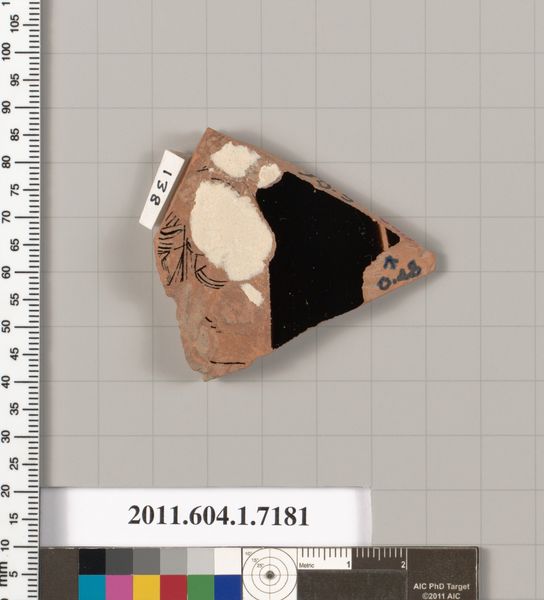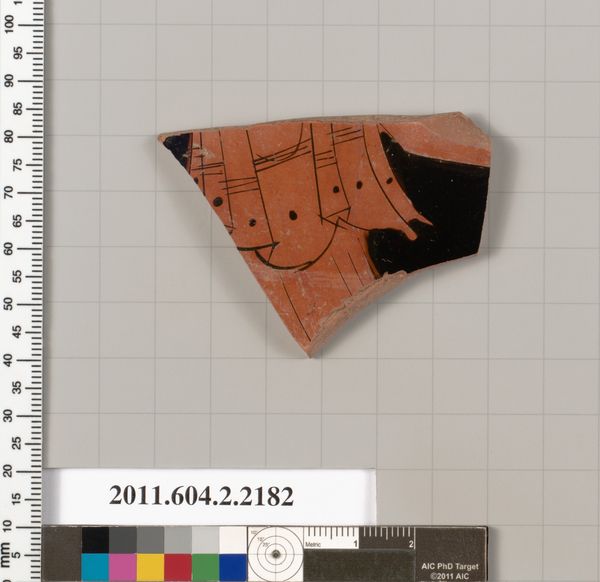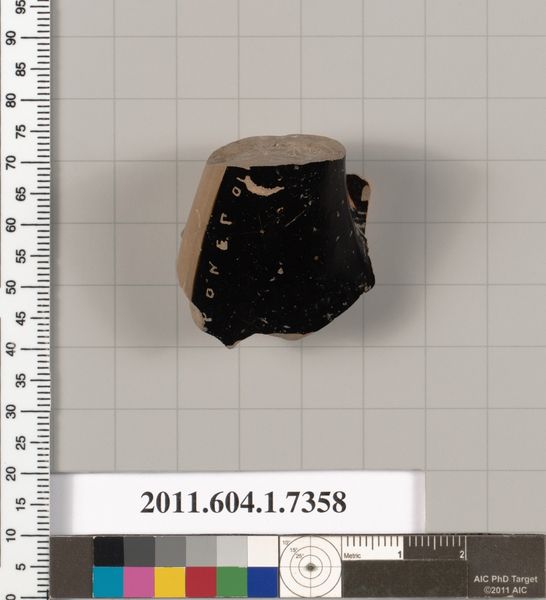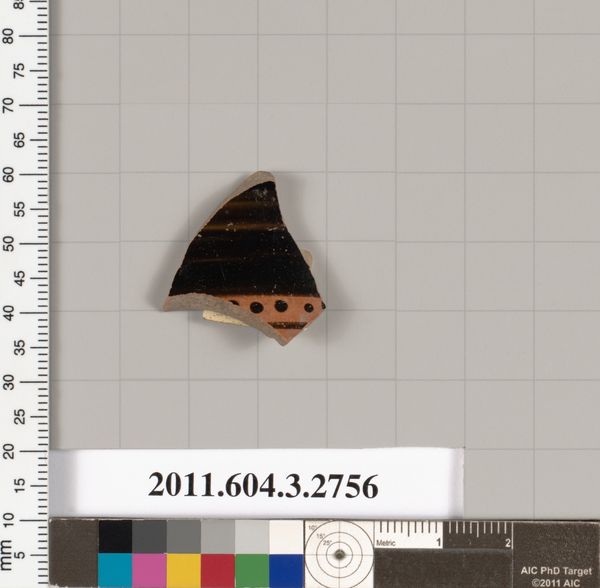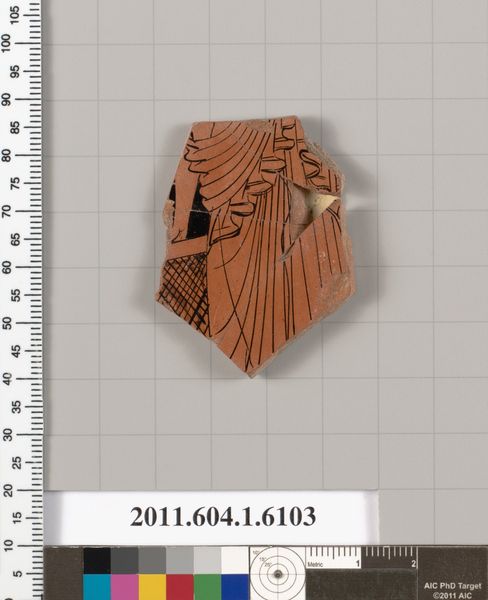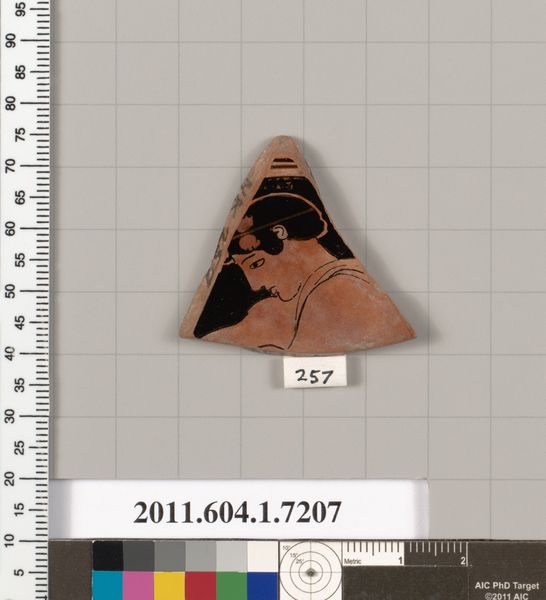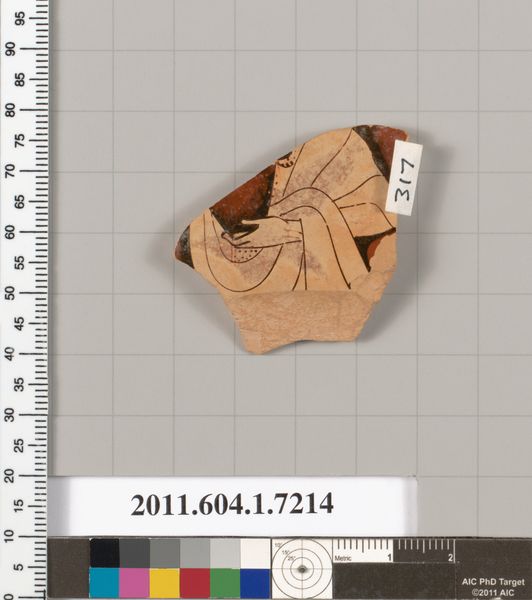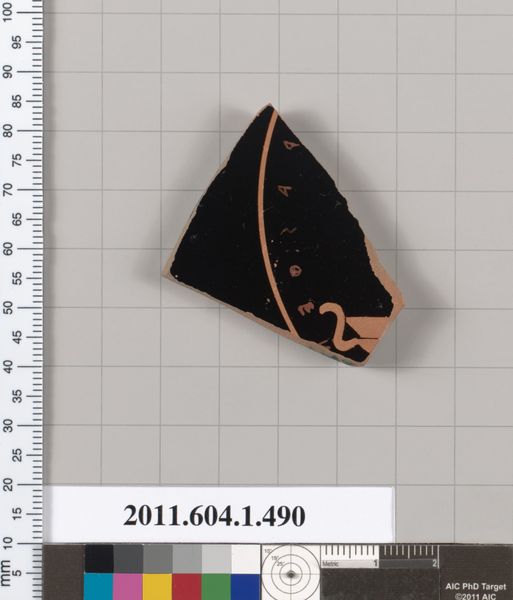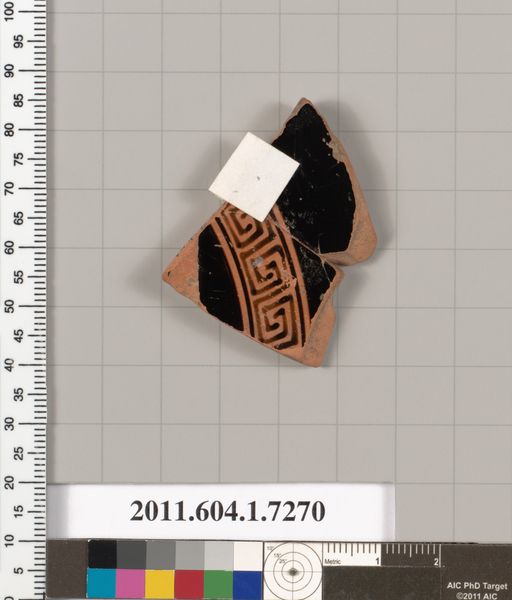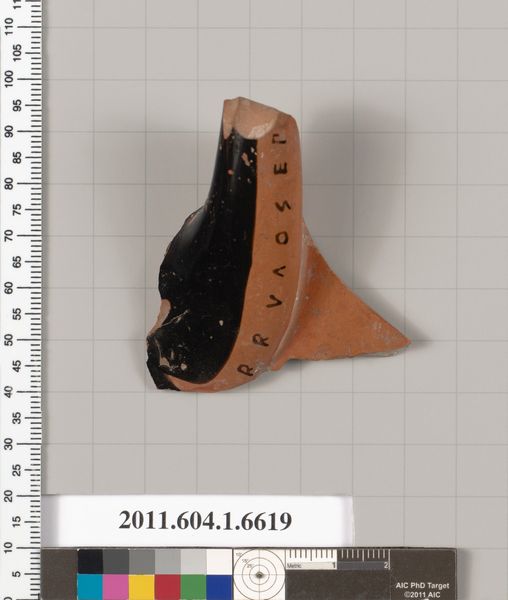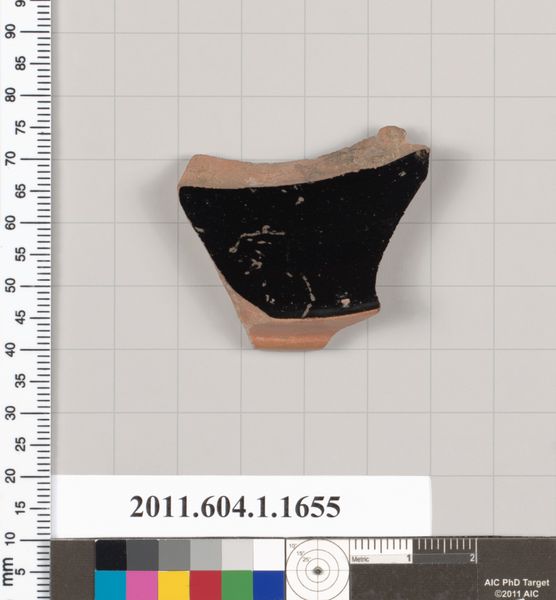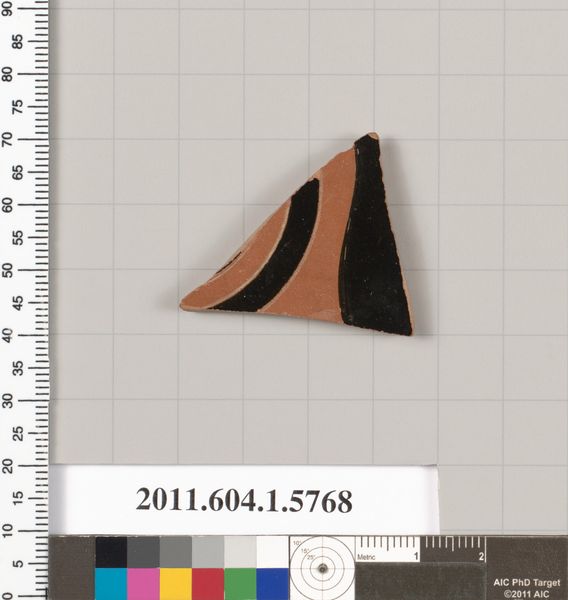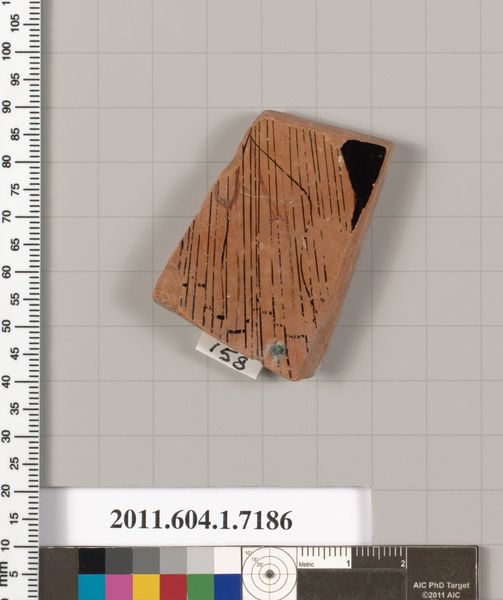
drawing, ceramic
#
portrait
#
drawing
#
greek-and-roman-art
#
ceramic
#
vase
#
figuration
#
roman-art
#
ancient-mediterranean
Copyright: Public Domain
Editor: Here we have a terracotta fragment of a kylix, a drinking cup, crafted around 530 BC. The artist is named as Makron and the shard is currently held in the Metropolitan Museum of Art. I’m immediately drawn to the contrast between the reddish clay and the bold black glaze, it feels striking despite being just a fragment. What do you make of this piece? Curator: Focusing on the formal qualities, note how the artist has used the curvature of the cup to their advantage. The lines create implied volumes, even within the limited space of the fragment. The remaining section of the painted area demonstrates a deliberate application of glaze to shape and define what seems to be the profile of a head. How would you interpret the artist’s approach to negative space? Editor: That's an interesting perspective, as it's just a fragment, so my brain is struggling to imagine how much negative space there might have been. But I see that, within the remaining fragment, they create a figure/ground relationship through solid blocks of dark colour. Curator: Precisely. The weight of the black, acting almost as a void, serves to enhance the detail found within the terracotta, compelling the viewer to concentrate on this delimited area. The strategic contrast highlights not only shape but texture, providing a tangible sense of dimensionality. We might observe that within that visual framework there are lines and details suggesting adornments, almost as abstract elements, on this presumed human profile. Editor: It’s amazing how much can be inferred from a fragment like this when you focus on form and visual elements. Curator: Indeed. It reminds us that meaning and appreciation can reside in even the smallest segment when the elements are deliberately chosen to maximize what they portray, no matter how seemingly simple or incomplete.
Comments
No comments
Be the first to comment and join the conversation on the ultimate creative platform.
